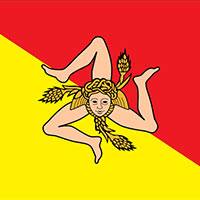Christ Pantocrator - depictions of Jesus Christ in Sicily
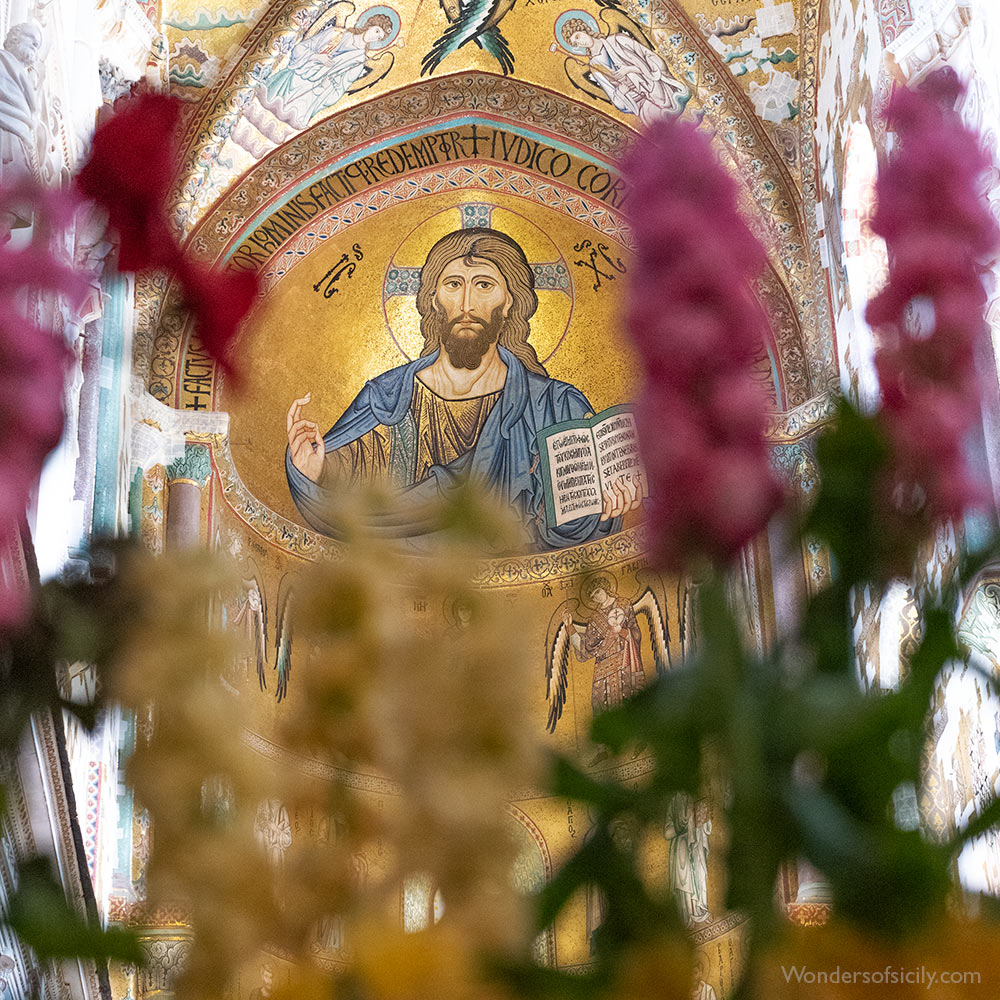
Christ Pantocrator
The most common translation of Pantocrator is "Almighty" or "All-powerful". In this understanding, Pantokrator is a compound word formed from the Greek words πᾶν, pan (gen. pantos), i.e. "all" and κράτος, kratos, i.e. "strength", "might", "power". This is often understood in terms of potential power; i.e., ability to do anything, omnipotence. Another, more literal translation is "Ruler of All" or, less literally, "Sustainer of the World". In this understanding, Pantokrator is a compound word formed from the Greek for "all" and the verb meaning "To accomplish something" or "to sustain something" (κρατεω). This translation speaks more to God's actual power; i.e., God does everything (as opposed to God can do everything).
- Christ Pantocrator in Martorana (Santa Maria dell'Ammiraglio)
- Christ Pantocrator in the Monreale Cathedral (Duomo)
- Christ Pantocrator in the Cefalù Cathedral
- Cappella Palatina (The Palatine Chapel)
Christ Pantocrator in Martorana (Santa Maria dell'Ammiraglio)
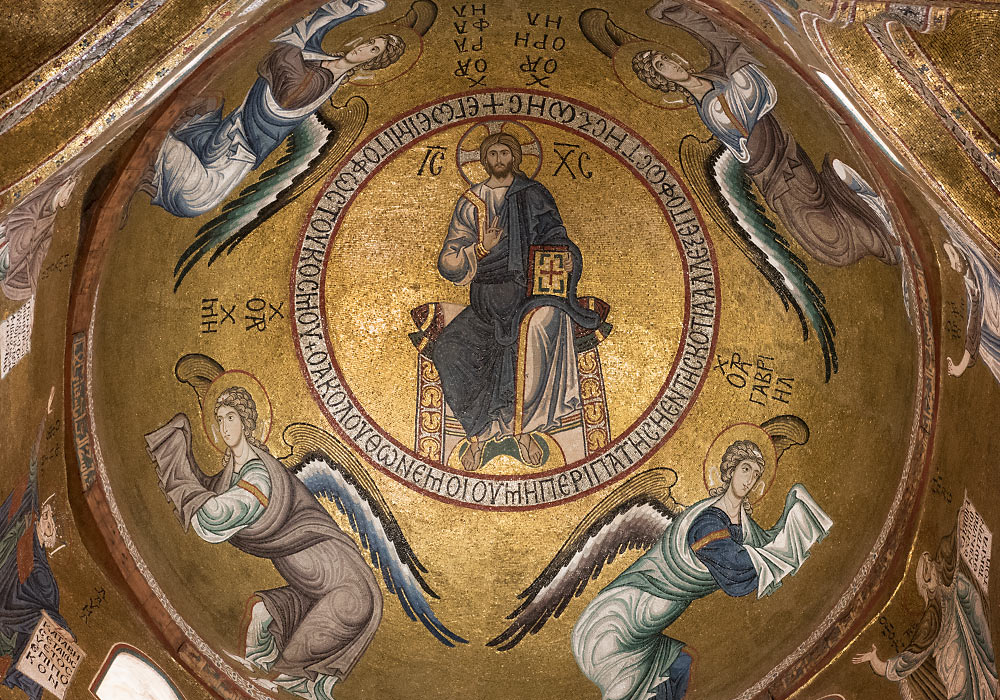
Christ Pantocrator in Martorana (Santa Maria dell'Ammiraglio), Palermo. The 12th century mosaics were executed by Byzantine craftsmen. In Cefalù and Monreale, Christ is holding a book (quoting John 8:12: "I am the light of the world, who follows me will not wander in the darkness but will have the light of life."), but in Martorana Christ is just holding the Bible. The quotation from John 8:12 is instead placed in a white ring around the Pantocrator, but only in Greek - the Latin translation has been omitted.
Christ Pantocrator in the Monreale Cathedral (Duomo)
The Cathedral in Monreale, built c. 1170-1189.
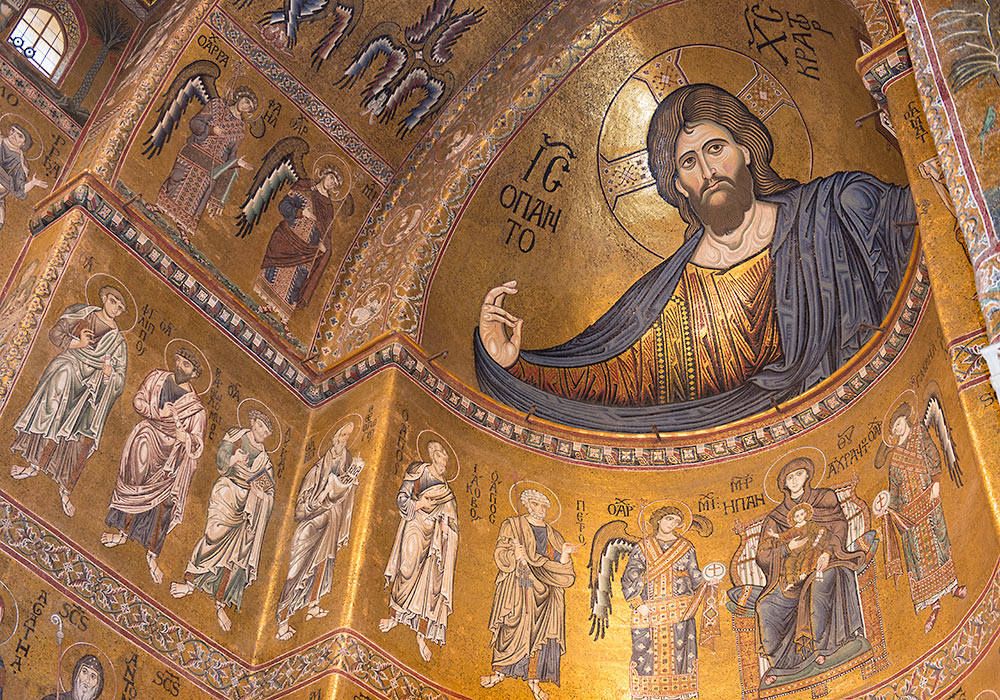
Christ Pantocrator: The cathedral in Monreale, Palermo, is regarded as the most beautiful of the Norman churches in Sicily. The mosaics were made with 2200 kg of pure gold, experts have estimated. Craftsmen from Constantinople were employed to expedite the work. The Byzantine mosaics are among the most magnificent in the world.
According to Dr. Ute Dercks (Kunsthistorisches Institut in Florenz, Max-Planck-Institut), documentary evidence dates the royal construction project to 1174, although initiatives in planning and preparation can be projected back to the death of King William I in 1166.
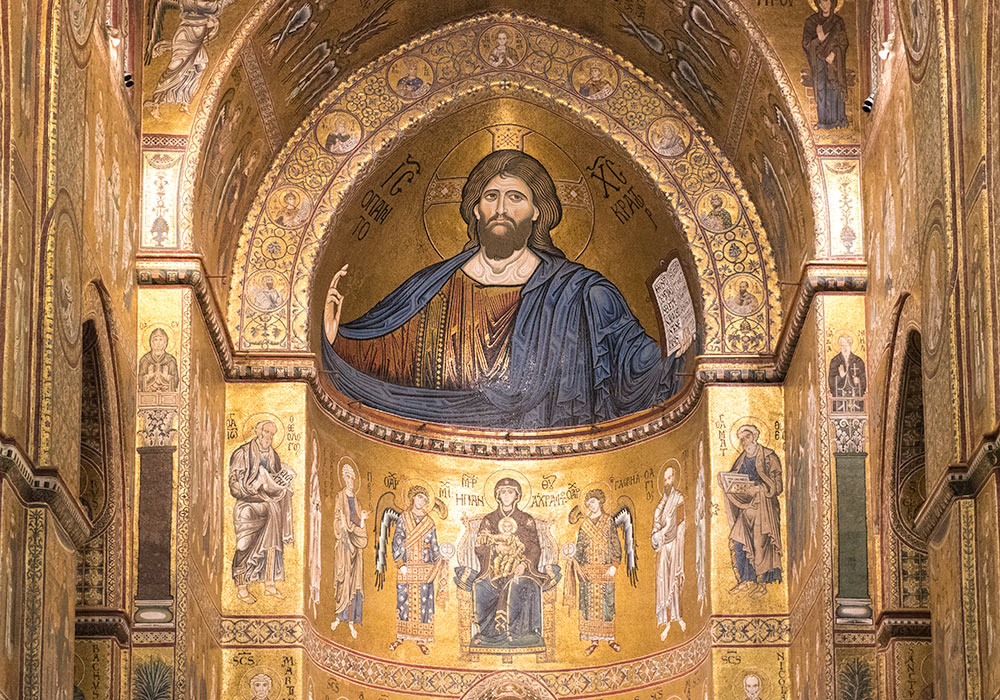
The Monreale Pantocrator.
Christ Pantocrator in the Cefalù Cathedral
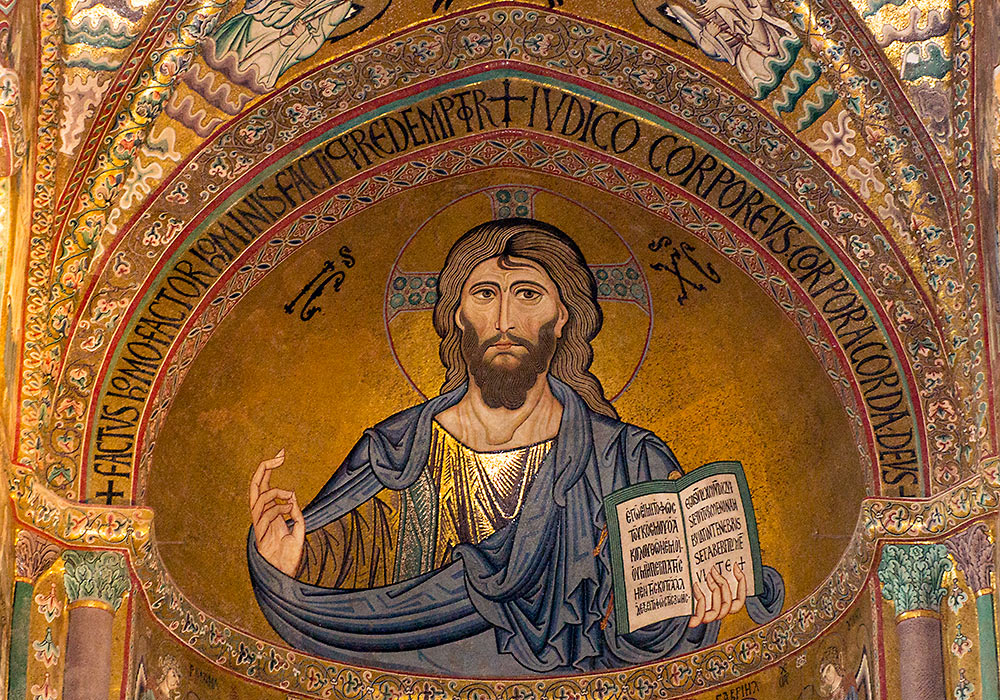
The most beautiful of them all: Christ Pantocrator in the Cefalù Cathedral.
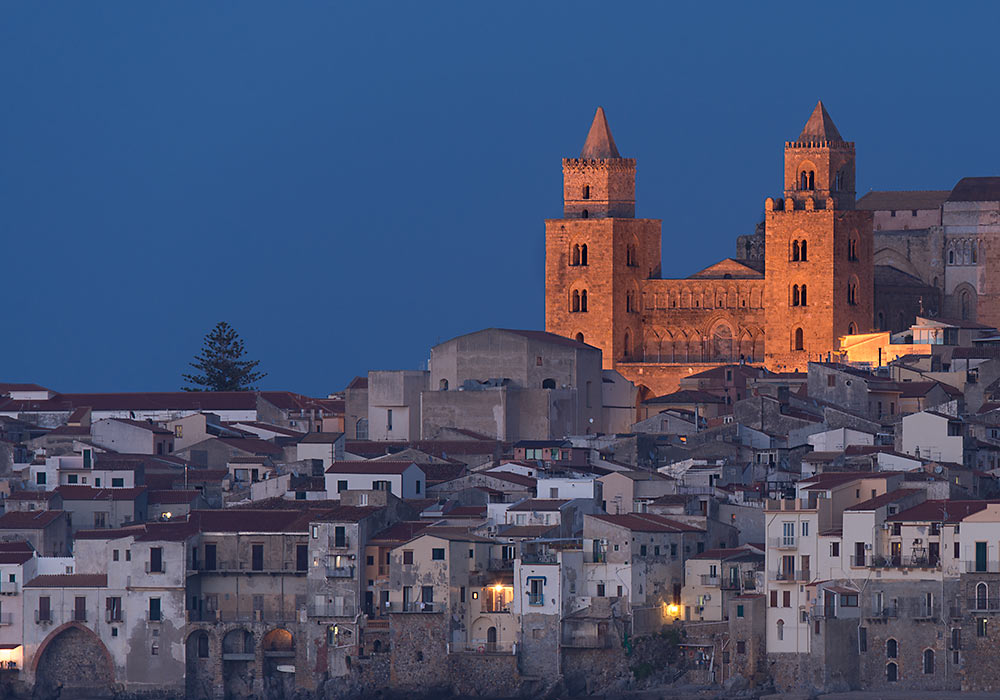
Cefalù and the Norman Cathedral.
(Info for photography nerds: ISO 100, f10, 6 sec)
- Here you can see our photos from the Cefalù Cathedral
- Here you can see photos from Cefalù
- Here you can see photos from La rocca di Cefalù (the mountain behind the cathedral)
- Here is our guide to help you find Aleister Crowley's Abbey of Thelema in Cefalù
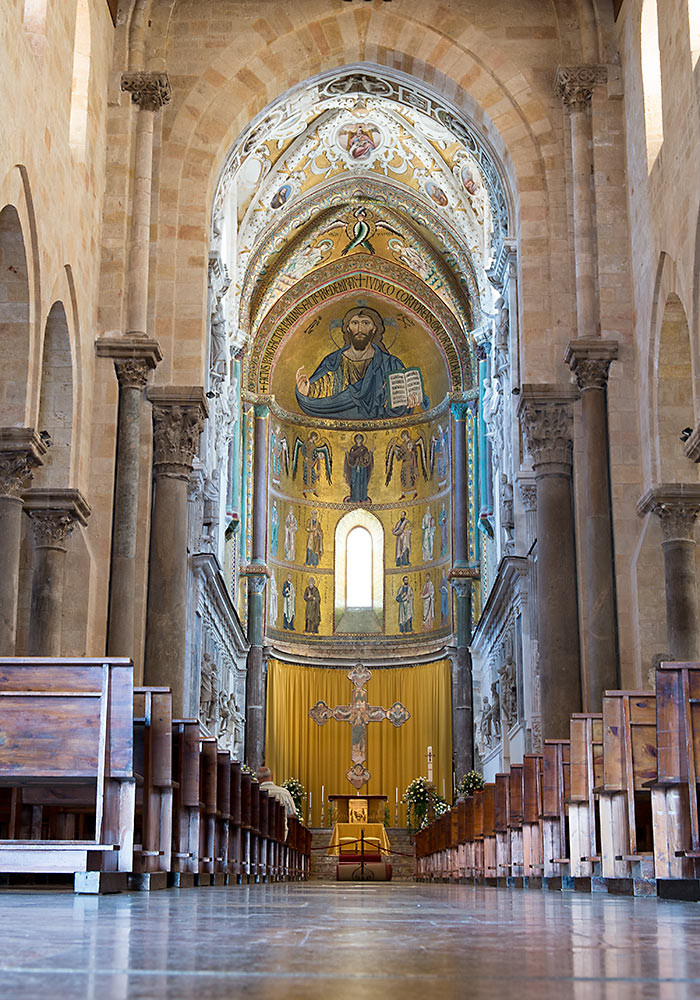
According to the historian John Julius Norwich (author of "The Normans in Sicily") the representation of the Pantocrator is the most sublime of all – "perhaps of Christ in any form in all Christian art". Construction began in 1131, the apse mosaics begun in 1145. After 1172 the church suffered a period of decline; the façade was completed in 1240. The Cathedral was consecrated in 1267 by Rodolphe de Chevriêres, Bishop of Albano.
Photo: Per-Erik Skramstad / Wonders of Sicily
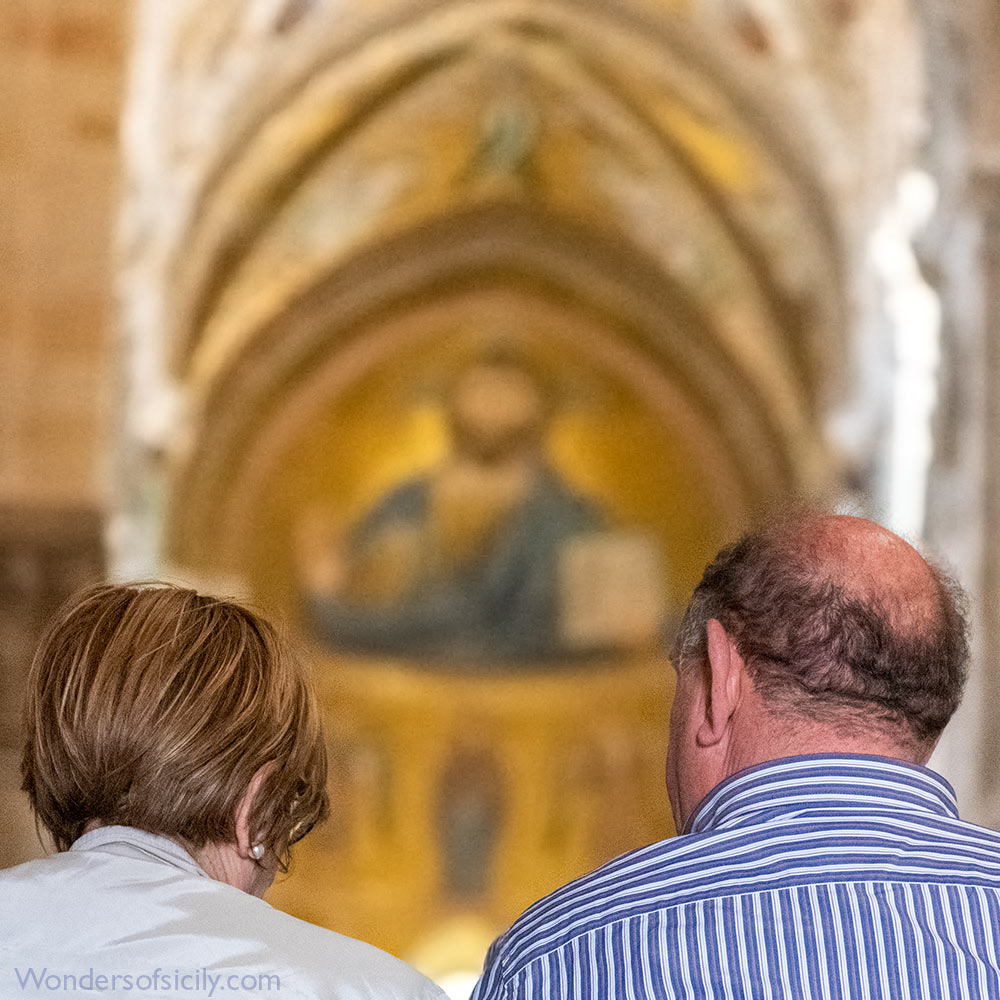
Visitors contemplating in front of Pantocrator in the Cefalù cathedral.
Cappella Palatina (The Palatine Chapel)
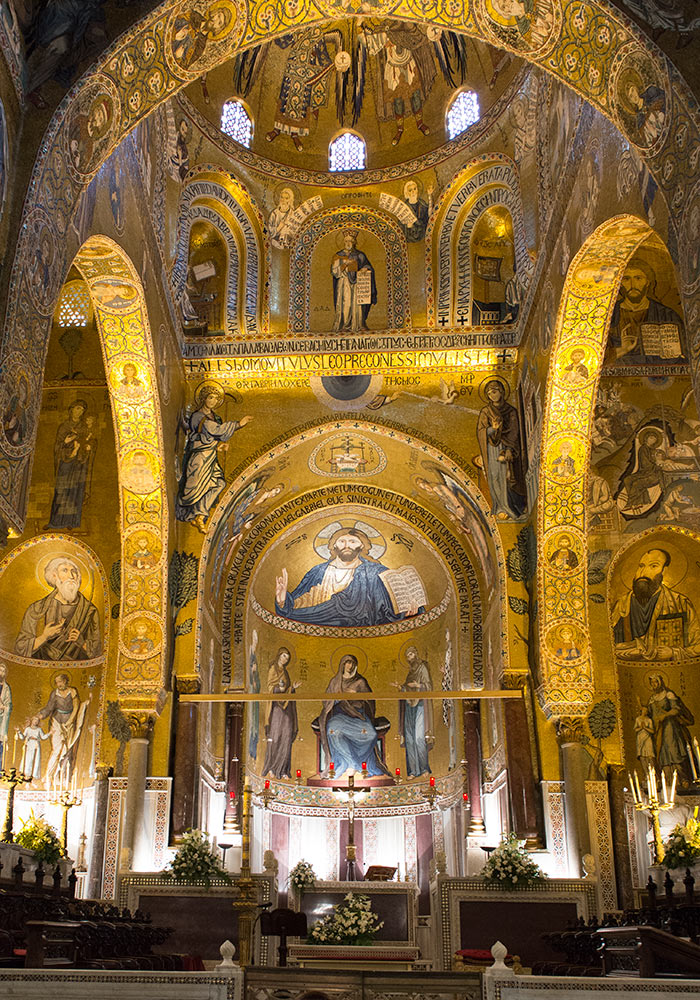
The Palatine Chapel is the royal chapel of the Norman kings of Kingdom of Sicily situated on the second floor at the center of the Norman Palace in Palermo. The chapel is a great symbol of multi-cultural cooperation. Craftsmen of three different religious traditions worked alongside each other.
Christ Pantocrator Aragonese style

Detail of the Palermo Cathedral. Christ Pantocrator is dressed like a Pope, following the desires of the Aragonese kings, usually very close to the papacy.
Selected sources

